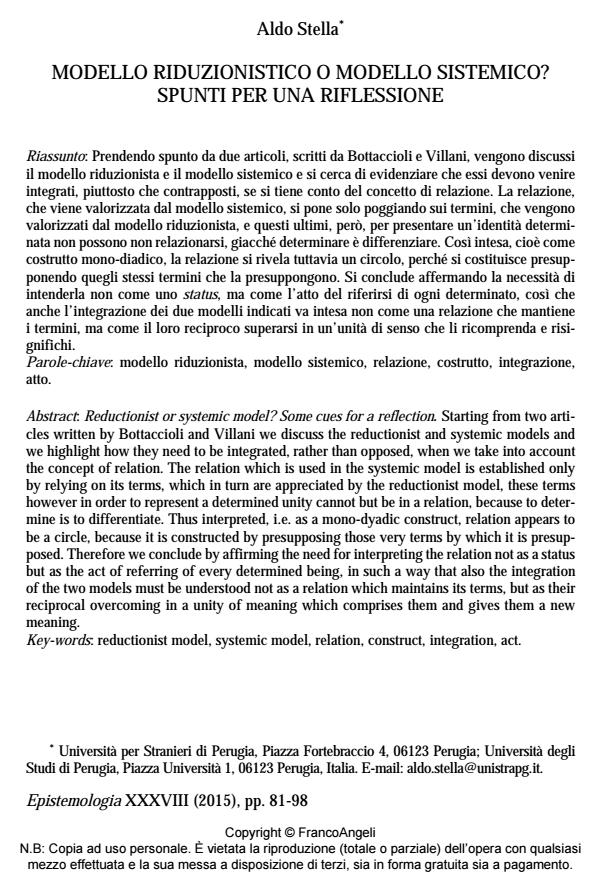Reductionist or systemic model? Some cues for a reflection
Journal title EPISTEMOLOGIA
Author/s Aldo Stella
Publishing Year 2015 Issue 2015/1
Language Italian Pages 18 P. 81-98 File size 112 KB
DOI 10.3280/EPIS2015-001006
DOI is like a bar code for intellectual property: to have more infomation
click here
Below, you can see the article first page
If you want to buy this article in PDF format, you can do it, following the instructions to buy download credits

FrancoAngeli is member of Publishers International Linking Association, Inc (PILA), a not-for-profit association which run the CrossRef service enabling links to and from online scholarly content.
Starting from two articles written by Bottaccioli and Villani we discuss the reductionist and systemic models and we highlight how they need to be integrated, rather than opposed, when we take into account the concept of relation. The relation which is used in the systemic model is established only by relying on its terms, which in turn are appreciated by the reductionist model, these terms however in order to represent a determined unity cannot but be in a relation, because to determine is to differentiate. Thus interpreted, i.e. as a mono-dyadic construct, relation appears to be a circle, because it is constructed by presupposing those very terms by which it is presupposed. Therefore we conclude by affirming the need for interpreting the relation not as a status but as the act of referring of every determined being, in such a way that also the integration of the two models must be understood not as a relation which maintains its terms, but as their reciprocal overcoming in a unity of meaning which comprises them and gives them a new meaning.
Keywords: Reductionist model, systemic model, relation, construct, integration, act.
Aldo Stella, Modello riduzionistico o modello sistemico? Spunti per una riflessione in "EPISTEMOLOGIA" 1/2015, pp 81-98, DOI: 10.3280/EPIS2015-001006